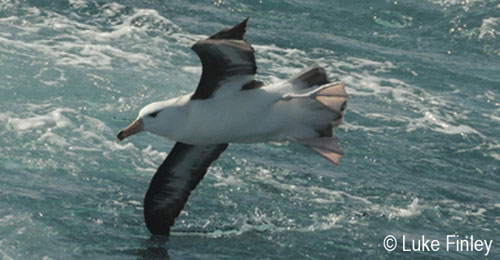Most studies of ACAP-listed albatrosses and petrels have been undertaken at breeding localities and much less is known of the birds' diets in their non-breeding seasons and away from the islands where they breed.
Published information on the diets of procellariiform seabirds off the coast of Brazil obtained by stomach-content analysis of birds found washed ashore and killed by longline fisheries has been reviewed by Fernanda Colabuono of the Departamento de Oceanografia, Fundação Universidade Federal de Rio Grande. Her findings, published in the 2009 edition of Sea Swallow, the Annual Report of the Royal Naval Birdwatching Society, show that fish (mainly Family Scianidae) are important items in the diets of Black-browed Thalassarche melanophris and Atlantic Yellow-nosed T. chlororhynchos Albatrosses whereas squid (mainly Family Histioteuthidae) predominate in the diets of White-chinned Procellaria aequinoctialis and Spectacled P. conspicillata Petrels. Squid also predominated in the diets of three species of Puffinus shearwaters and the Antarctic Fulmar Fulmarus glacialoides in Brazilian waters.

Click here for an earlier publication by Fernanda Colabuono on the non-breeding diets of ACAP-listed albatrosses and petrels off Brazil.
Reference:
Colabuono, F.I. 2009. The diet of albatrosses and petrels in Brazil: a review of current knowledge. Sea Swallow 58: 59-74.
John Cooper, ACAP Information Officer, 24 December 2009

 English
English  Français
Français  Español
Español